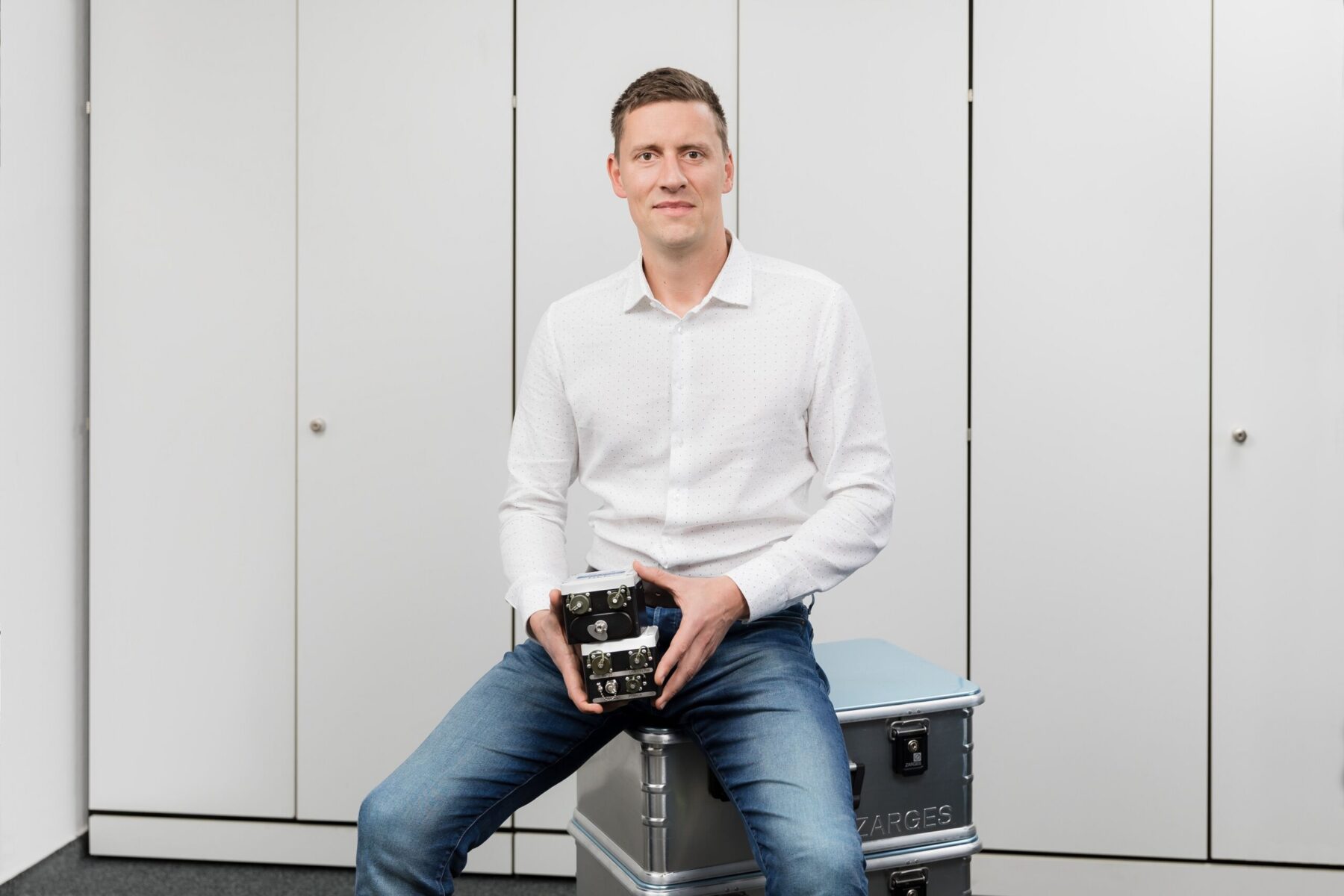
3 Questions with DiGOS: “Making the World a Little Bit Safer” – Fighting Space Debris with Laser Pulses
7,000 – 28,000 km/h. That’s the kind of incredible speeds satellites can travel at in space. They orbit the earth at distances of 100-23,000 km. Inch-perfect tracking of their positions is a gruelling challenge. One of the few companies in the world that are up to the task is DiGOS in Potsdam. In fact they’re so good at it they’re planning to put up their own building in the new Technology Campus at the Potsdam Science Park. Managing Director André Kloth tells us all about how they manage to track satellites down to the millimeter via Satellite Laser Ranging (SLR) and how they plan to help reduce space debris (space junk).
Good morning Mr. Kloth. Satellites orbit thousands of kilometers above the earth and travel at lightning-fast speeds. Where did you get the idea from of tracking their positions and turning the endeavor into your own business?
It was actually a coincidence that got me started. I’d graduated from Potsdam University in IT, and wanted to apply what I knew to real-life problems. That was more of a draw for me than, say, apps. Just then in 2011, the GFZ in Potsdam (Deutsches GeoForschungsZentrum, ‘German Geo Research Centre’) was planning to modernize the laser station they used to track the way satellites move. Together with Jens Steinborn I modernized the station’s control system based on Real-Time Linux. Then we got a follow-up contract from Finland where people were excited about what we’d achieved at GFZ. And that led to the idea of setting up our own business, through which DiGOS came about in 2014 as a GFZ spin-off.
How exactly does your equipment manage to track satellites’ precise positions, and how would you explain Satellite Laser Ranging to the uninitiated?
Basically what we do is send laser pulses into space towards the satellites, and the reflected signal is then measured back on earth. With the speed these pulses travel at, they make it out to a satellite 20,000 kilometers above and back within a fraction of a second. We use the time elapsed between sending the laser pulse and detecting its reflected light back on earth to gauge the distance to the satellite. We send thousands of pulses so as to get accurate distance measurements, and use those to calculate the position down to the millimeter. The basic technology has been there since the 1960s but is undergoing a renaissance; researchers have massively improved it, and we can measure to much greater degrees of precision. DiGOS Potsdam is one of the few companies in the world, I’m proud to say, that is in a position to supply turnkey SLR ground station systems. We’ve done very well with them so far and have already provided laser stations for the European Space Agency ESA and the Japan Aerospace Exploration Agency JAXA. That’s helped us build up the business and grow to around 25 members of staff. Being bigger means we need more room, which is why we’re going to have our own building in the Potsdam Science Park, as part of the Technology Campus. We’re specifically looking to house 50-60 team members in 1,000 square meters of space. The plans will start being drawn up in 2023 and we should be moving in in around 2026.
What else does DiGOS want to achieve?
We’re drawn to the challenge of working in a technically demanding and novel field, and the team is also strongly motivated by the idea of making the world a little bit safer. That’s why space debris is one of the issues that we’d like to take on – and we can. There are about 8,000 tons of debris flying through space right now, according to European Space Agency estimates, moving at several tens of thousands of kilometers an hour. That’s enough to destroy satellites that cost millions to build, producing new space debris in the process. And the problem’s only getting bigger. Although at DiGOS we cannot solve the problem on our own, we can contribute to progress. That’s what drives us.
Thank you for joining us, Mr. Kloth.
Image credit: André Kloth © DiGOS Potsdam GmbH
This blog and the projects of Standortmanagement Golm GmbH (Location Management) at the Potsdam Science Park are funded by the European Fund for Regional Development (EFRD) and the Federal State of Brandenburg.